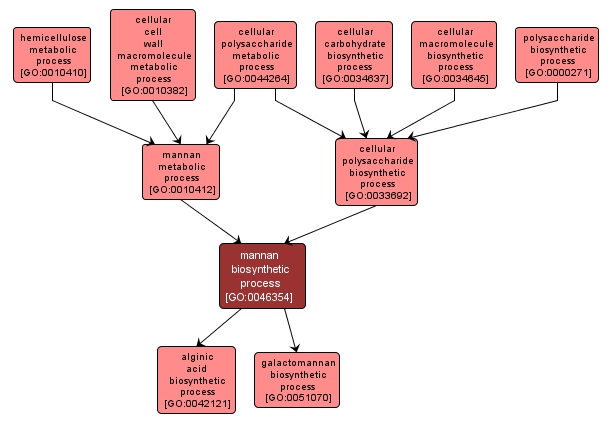GO TERM SUMMARY
|
| Name: |
mannan biosynthetic process |
| Acc: |
GO:0046354 |
| Aspect: |
Biological Process |
| Desc: |
The chemical reactions and pathways resulting in the formation of mannan, the main hemicellulose of soft (coniferous) wood, made up of D-mannose, D-glucose and D-galactose. |
Synonyms:
- mannan biosynthesis
- mannan formation
- mannan anabolism
- mannan synthesis
|
|

|
INTERACTIVE GO GRAPH
|














